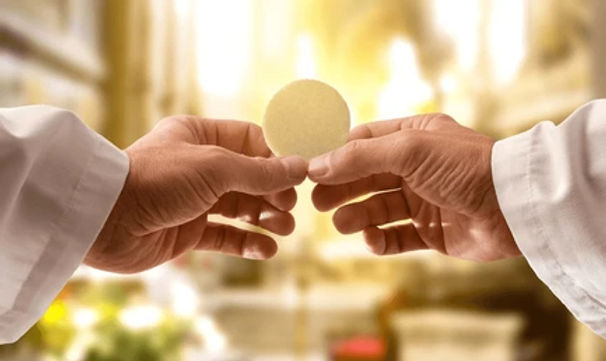The Eucharist: The Real Body and Blood of Christ

The Eucharist stands at the heart of Catholic faith, not as a mere symbol, but as the actual Body and Blood of Jesus Christ. This belief is deeply rooted in Scripture, Tradition, and the teachings of the Church, affirming the real presence of Christ in the Blessed Sacrament.
Biblical Foundations
The words of Christ Himself provide the strongest testimony to the reality of the Eucharist. At the Last Supper, Jesus took bread, blessed it, broke it, and gave it to His disciples, saying, "Take, eat; this is My body" (Matthew 26:26). Similarly, He took the cup, saying, "Drink from it, all of you; for this is My blood of the new covenant, which is shed for many for the remission of sins" (Matthew 26:27-28). These words are not metaphorical; they indicate a profound mystery where bread and wine are transformed into His very being.
In John 6, Jesus explicitly declares: "Unless you eat the flesh of the Son of Man and drink His blood, you have no life in you" (John 6:53). When many of His followers found this teaching hard to accept and left, Jesus did not soften His words or correct a supposed misunderstanding. Instead, He reaffirmed the necessity of consuming His Body and Blood for eternal life.
The Teaching of the Church
The Catholic Church, from its earliest days, has unwaveringly upheld the doctrine of the Real Presence. The Church Fathers, including St. Ignatius of Antioch (c. 107 AD), spoke of the Eucharist as "the flesh of our Savior Jesus Christ" (Letter to the Smyrnaeans). St. Justin Martyr (c. 155 AD) also affirmed that the Eucharist "is not common bread and common drink but has been made into the flesh and blood of Jesus" (First Apology).
The doctrine was further clarified in the Councils of the Church. The Fourth Lateran Council (1215) and the Council of Trent (1545-1563) articulated the belief in transubstantiation—the change of the substance of bread and wine into Christ’s Body and Blood while retaining their physical appearances. This remains the cornerstone of Catholic Eucharistic theology.
The Mystery of Transubstantiation
Transubstantiation is the term used to describe how the essence of bread and wine is transformed into Christ’s real presence. While the appearance (or "accidents") of bread and wine remain, their substance is wholly changed. This mystery surpasses human comprehension but is embraced in faith.
The Eucharist is not a re-sacrificing of Christ but a participation in His one, eternal sacrifice made present at every Mass. As the Catechism of the Catholic Church states: "The Eucharist is the source and summit of the Christian life" (CCC 1324). Through it, we are united with Christ’s saving work and drawn into deeper communion with Him.
The Transformative Power of the Eucharist
Beyond being a doctrine to believe in, the Eucharist calls for transformation in the lives of the faithful. When we receive the Body and Blood of Christ, we are not only nourished spiritually but are also called to become what we receive—living witnesses of Christ in the world.
The Eucharist strengthens us against sin, deepens our unity with the Church, and prepares us for eternal life. Just as food sustains the body, the Eucharist sustains the soul, making us more Christ-like in our thoughts, words, and actions.
Conclusion
The Eucharist is not a symbolic act but the real and substantial presence of Christ. Rooted in Scripture, affirmed by Church Tradition, and experienced by millions of Catholics throughout history, it remains the greatest gift Christ has left for His Church. As we approach the Eucharist, let us do so with faith, reverence, and an open heart, ready to be transformed by the true presence of our Lord.
"O Sacrament most holy, O Sacrament divine, all praise and all thanksgiving be every moment Thine."
